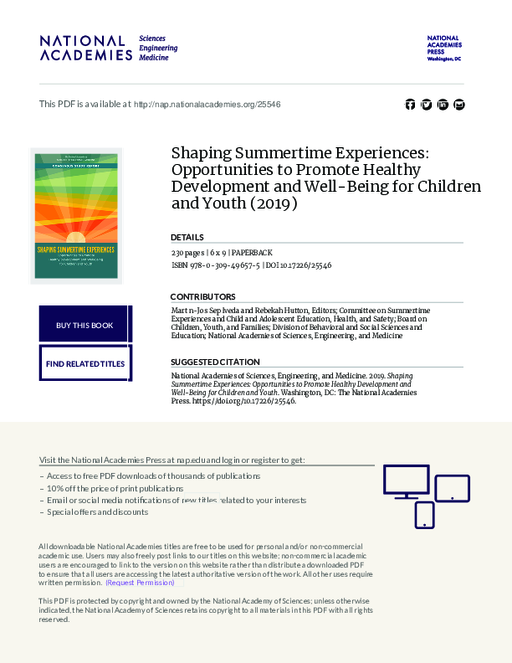Research Approach
This report is the work of a 13-member study committee. Members were charged with reviewing and evaluating evidence on the effectiveness of summertime programs and activities for children and youth.
The focus was on four areas. They included:
- academic learning and enrichment;
- social and emotional development;
- physical and mental health;
- safety, risk-taking, and anti- and pro-social behaviors.
Research included insights from experts in rural health, programs and policy, human services and justice, and other areas. The committee also heard from people working in the private sector. In addition, the committee reviewed published literature and research. And it commissioned papers on international programs and policies on summertime activities for children and youth, and other related topics.
The committee included individuals with expertise ranging from education to medicine and business. It met in person five times and held one public information-gathering session.
At that session, members heard from experts who discussed the summertime experiences of children and adolescents in rural communities. The committee also heard from people working in the private sector. They discussed strategies for engaging the private sector to improve summertime experiences.
The committee’s literature review included searches of online databases, reviews of other relevant reports of the National Academies of Sciences, Engineering, and Medicine, and information requests to 13 stakeholder groups. The committee also received memos from knowledgeable stakeholder organizations. And they gathered information from federal, state, and municipal entities.
In addition, the committee commissioned papers on several areas. They included international programs and policies on summertime activities and on juvenile justice, child welfare, and policing. And they included the impact of geography and the built environment on summertime experiences.
Summer-specific literature does not provide a comprehensive inventory of summer-time experiences. Members instead used American Time Use Survey (ATUS) data and other longitudinal studies.

